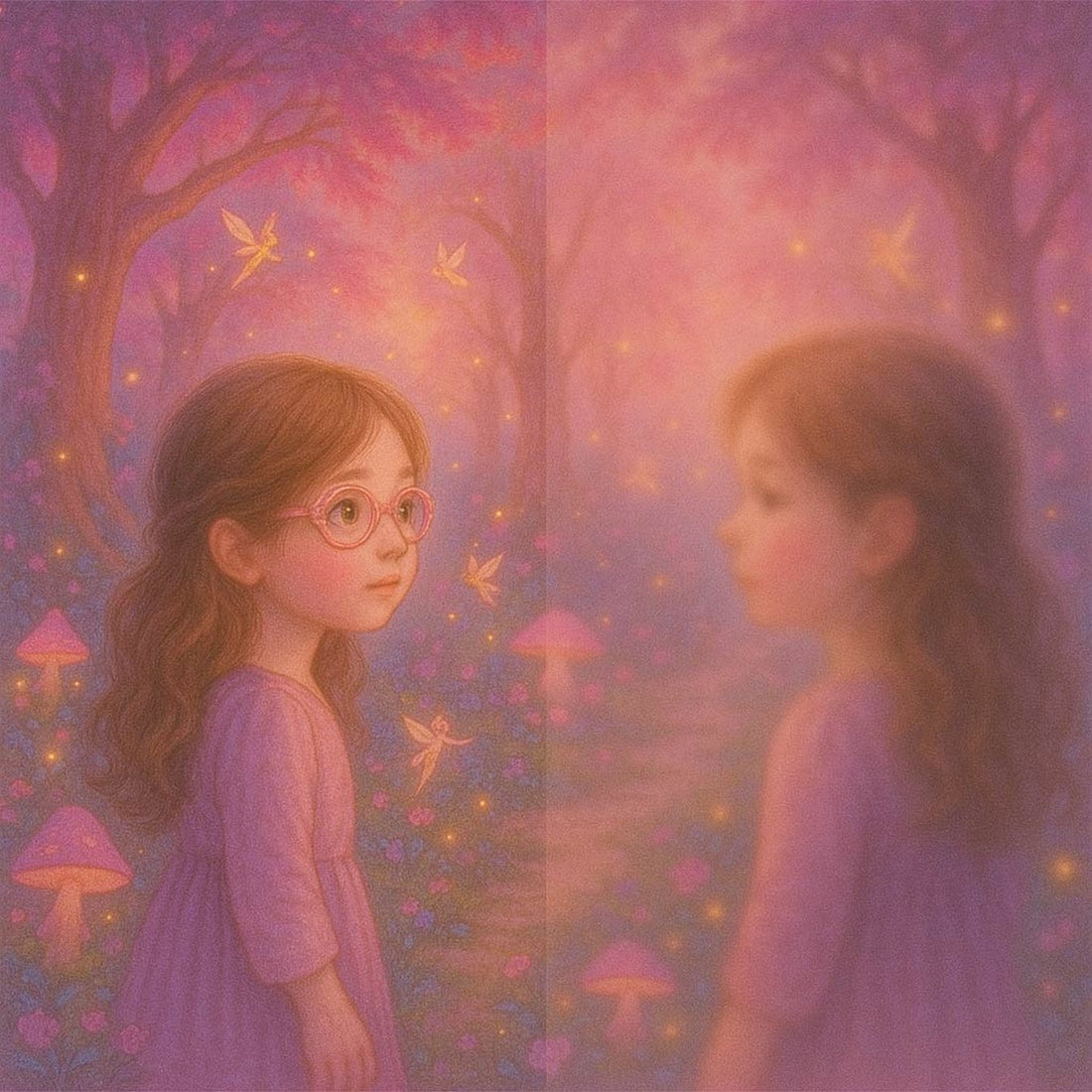
Seeing the World in Soft Focus. Understanding Hyperopia (Farsightedness) in Children
Share
Author: Hayley Martin
Helping Your Child Focus Clearly. With Heart, Hope, and a Hint of Magic
Sometimes, a child’s world looks just a little blurrier than it should. She may squint to read her favorite storybook or hold her crayons farther from her face. She might be cheerful and thriving but struggling more than she needs to when it comes to seeing clearly up close.
This is often the quiet sign of hyperopia, also known as farsightedness, a common refractive vision condition in children. And just like every fairytale has a twist before the happy ending, spotting farsightedness early can lead to a truly magical transformation which can result in clear vision, stronger confidence, and easier learning.
Let’s step gently into what hyperopia means, how to recognize it, and the loving ways we can help your child see her world with clarity and wonder.
What Is Hyperopia in Children?
A Quick Glimpse into Farsighted Vision
Hyperopia (pronounced hy-PAIR-oh-pee-uh) is a condition where distant objects may appear clear, but things up close, such as books, homework, or tiny details, can look blurry. It happens when the shape of the eye causes light to focus behind the retina instead of directly on it.
While a small degree of farsightedness is normal in young children (and often outgrown), moderate to severe hyperopia can affect a child’s ability to read, write, and concentrate in school.
But here’s the good news: with the right support, like a pair of beautifully crafted glasses made just for her, your little one can learn, play, and thrive without skipping a beat.
Signs of Hyperopia in Children
What to Watch For, Even If She Doesn’t Complain
Children don’t always know how to explain blurry vision. And if they’ve always seen the world this way, they may assume everyone sees that way too.
Here are some subtle signs that may suggest your child is farsighted:
- Complaining of tired eyes or headaches after reading or screen time
- Avoiding close-up tasks like coloring, puzzles, or writing
- Squinting, rubbing her eyes, or blinking a lot
- Holding books or tablets farther away than usual
- Trouble focusing in class or seeming distracted
- Covering one eye to see better up close
Many parents discover their child’s hyperopia during a routine eye exam, which is why we always recommend scheduling that magical first visit to a pediatric optician no later than the age of 3, but ideally between the ages of 6 - 12 months.

Why Early Detection Matters
The Sooner We See It, the Sooner She Sees Clearly
Uncorrected hyperopia can cause eye strain, headaches, and even developmental delays in reading and learning. In some cases, it may also lead to strabismus (when the eyes don’t align properly) or amblyopia (“lazy eye”) if one eye is working harder than the other.
By identifying hyperopia early, we can offer gentle and effective solutions, often as simple as a pair of glasses, to prevent these challenges from growing.
And when those glasses are as enchanting as the little girl wearing them? That’s where the true magic begins.
Treating Hyperopia in Children
Corrective Tools That Feel Like Treasures
The most common and effective treatment for hyperopia is prescription eyeglasses. The lenses help focus light correctly on the retina, allowing your child to see clearly up close and far away.
At Once Upon a Charm, we believe glasses should be a joy, not something to dread or tolerate. That’s why our girls’ eyewear is:
- Delicately sized for little faces
- Ultra-lightweight for all-day comfort
- Designed with love and sparkled with our patent pending interchangeable charms that let her express her mood, her magic, and her ever-changing imagination.
Because when her glasses feel like part of a story she loves, she’ll be excited to wear them every day.
How to Support Your Farsighted Child
With a Little Encouragement (and Maybe a Sprinkle of Fairy Dust)
As with any change, your child may need time to adjust to her glasses. Here’s how you can help her fall in love with clear vision:
- Celebrate her new glasses like a special gift
- Let her choose her favorite frame and charm combination
- Read stories together about glasses-wearing heroes
- Praise her for wearing them, even if just a few minutes at first
- Keep a spare pair on hand for adventures (and playground surprises)
And if you’re wondering how to care for her magical new glasses, don’t worry, we’ve written a whole article about it!
For more tips on helping your child like her glasses, explore our From Hesitation to Celebration: Helping Your Child Fall in Love with Her Glasses article.
Final Thoughts: Helping Her See the World Brightly and Bravely
Hyperopia may be common, but every child’s vision journey is uniquely hers. If your little one is farsighted, know that with early care, supportive tools, and lots of love, she can see the world in dazzling detail.
And as she steps into that clearer, brighter world, whether she’s reading, drawing, or simply watching clouds, you’ll know you helped her get there.
Explore our girls’ beautiful glasses collection and discover the hand painted collection of charms that turn clear vision into a fairytale.
